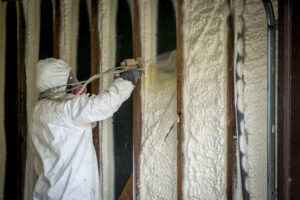Delivering Safe Water Safely
Clean tap water for drinking, cooking and bathing is critical to our day-to-day existence. Chlorine disinfectants, such as elemental chlorine, sodium hypochlorite and calcium hypochlorite1, used to purify water supplies, are key to our health. In fact, almost all U.S. water systems that disinfect their water use some type of chlorine-based process to do so.
Increasingly, clean water enters homes and wastewater flows out through polyvinyl chloride (PVC) pipes—products of chlorine chemistry. In many homes, PVC pipes have replaced traditional metal pipes. PVC pipes have the advantage of being inert, meaning that they do not react chemically with the water that flows through them or with the soil in which they may be buried. That helps ensure the quality of water can remain high as it journeys from the treatment plant to the tap. Being inert also means PVC pipes tend to last longer than metal pipes. PVC pipes are also typically much lighter than metal pipes, requiring less energy to transport them to construction sites.
Climate Control
 The products of chlorine chemistry can also help keep homes warm and cozy in winter and cool and comfy in summer. Chlorine chemistry is used to produce the chemical building blocks needed to manufacture polyurethane foam wall and roof insulation. Insulation acts as a barrier to outside temperatures, helping to reduce fossil fuel use and household energy costs. PVC windows and siding are generally energy-efficient, long-lasting and can save trees as they replace wooden windows. PVC also is recyclable; according to the Vinyl Institute, one billion pounds of vinyl is recycled annually2.
The products of chlorine chemistry can also help keep homes warm and cozy in winter and cool and comfy in summer. Chlorine chemistry is used to produce the chemical building blocks needed to manufacture polyurethane foam wall and roof insulation. Insulation acts as a barrier to outside temperatures, helping to reduce fossil fuel use and household energy costs. PVC windows and siding are generally energy-efficient, long-lasting and can save trees as they replace wooden windows. PVC also is recyclable; according to the Vinyl Institute, one billion pounds of vinyl is recycled annually2.
Kitchen and Bathroom Surfaces
Microscopic critters that can live on raw meats or contaminated vegetables can wreak havoc in our homes by infecting family members and making them sick. Chlorine disinfectants are used to help destroy food-borne germs on kitchen preparation surfaces. Properly disinfecting cutting boards, countertops and other food-contact surfaces with diluted chlorine bleach solutions reduces the risk of contracting food-borne illnesses.
Chlorine disinfectants are used to sanitize bathrooms, too, and a diluted solution of chlorine bleach (sodium hypochlorite) can be handy for wiping down household surfaces when a family member is sick with a contagious “bug,” such as a cold or flu virus.
Hi-Tech Gadgets
It is hard to imagine a home today without hi-tech equipment, which relies on computer technology. The silicon microprocessor chips in these devices are produced using chlorine chemistry. On a typical morning you might rely on silicon microchips to help wake you up (alarm clock), heat up your breakfast (microwave oven), check your e-mail (computer or smartphone phone), play music (stereo sound system) and watch the morning news (television).
Disinfection Solution
Mix ¾ cup of ordinary chlorine bleach in a gallon of water to make an all-purpose disinfecting solution. Apply to hard surfaces with cloth or sponge; let stand 5 minutes. Rinse thoroughly and air dry. Always read and follow precautions and usage directions before using products.
No More Small Beer
In Colonial North America, long before the era of municipal water treatment, families drank a weak alcoholic beverage called “small beer.” This drink provided a source of fluid without putting family members at risk for waterborne sickness. The alcohol in small beer helped destroy disease-causing germs that live in stream water, for example. Today, thanks to the use of chlorine disinfectants, water is disinfected before it enters your home, and you can drink this tap water with a high degree of confidence that you will not become sick.
Sources
- National Library of Medicine: https://pubchem.ncbi.nlm.nih.gov/compound/Calcium-hypochlorite
- The Vinyl Institute: https://www.vinylinfo.org/recycling/




